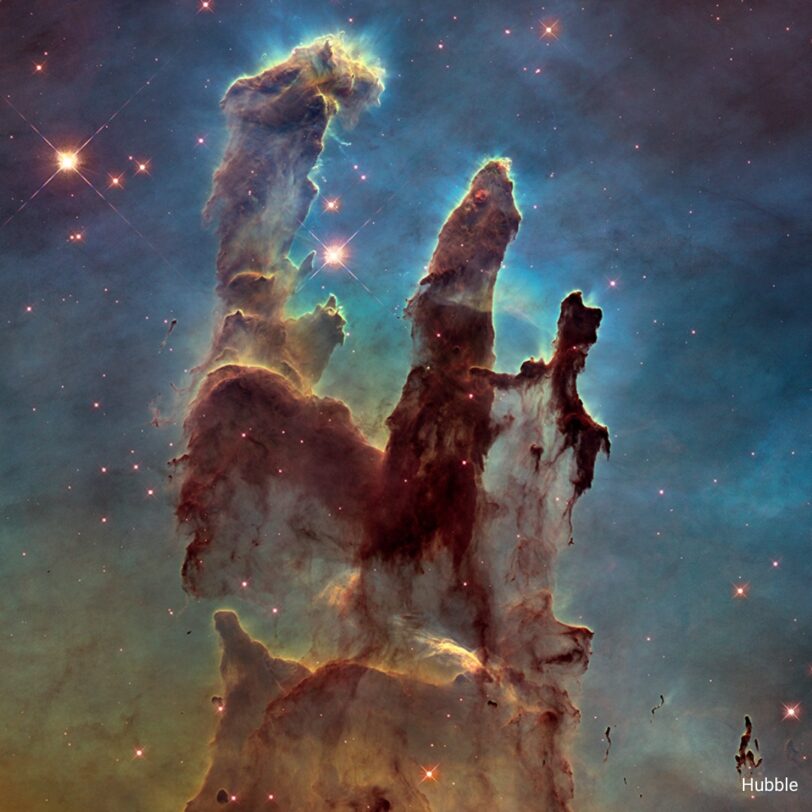Look up at the night sky, and you might spot twinkling stars, but did you know that some stars are actually born in vast clouds of gas and dust? One such fascinating phenomenon is the “Pillars of Creation,” a captivating sight in the Eagle Nebula, a place where stars come to life. Let’s dive into this cosmic wonder and learn how scientists captured its beauty.
What are the Pillars of Creation?
Imagine towering columns of interstellar clouds that look like the fingers of a giant hand reaching into space. These are the Pillars of Creation! They’re located in a distant place called the Eagle Nebula, which is like a celestial nursery where new stars are born.
How Were They Captured?
Our eyes on Earth might miss some details in space, but we have clever tools to help us see better. One of these tools is the Hubble Space Telescope, like a super-powered camera in space. In 1995, Hubble took a breathtaking picture of the Pillars of Creation, revealing intricate details that dazzled people all around the world. It’s like a space selfie from really, really far away!
Star-Forming Regions: Where Stars are Born
Before we talk more about the Pillars, let’s understand what a star-forming region is. Just like baby animals are born in special places, stars are born in star-forming regions. These regions are like cosmic cradles where clouds of gas and dust come together, pulled by gravity. When the gas and dust get squished together, they heat up and start to shine – that’s how a star is born!
Inside the Pillars
Now, back to the Pillars of Creation! Imagine these pillars as star nurseries. Deep inside them, hidden by the thick clouds, tiny baby stars are starting to grow. Powerful light and wind from nearby older stars are like cosmic nightlights and gentle breezes, shaping the pillars as they blow away the gas and dust. This is where the magic happens – where stars are taking their very first baby steps.
Why It Matters
Studying star-forming regions like the Pillars of Creation helps scientists learn more about how stars, like our Sun, come into existence. It’s like solving a space puzzle! By understanding these processes, scientists can learn about the birth and life of stars, and even how planets might form around them. It’s a bit like looking at old baby photos to learn about your own childhood.
Closing Thoughts
So, the Pillars of Creation are not just beautiful space art; they’re windows into the incredible journey of stars being born. Thanks to the Hubble Space Telescope, we can admire these cosmic sculptures and learn more about the secrets of our universe. The next time you look up at the stars, remember that some of them might have started their journey in places like the Pillars of Creation, where the magic of star formation unfolds.



There is so much to learn about our planet & universe, we cannot be arrogant enough to perceive that this earthly experience is all there is.